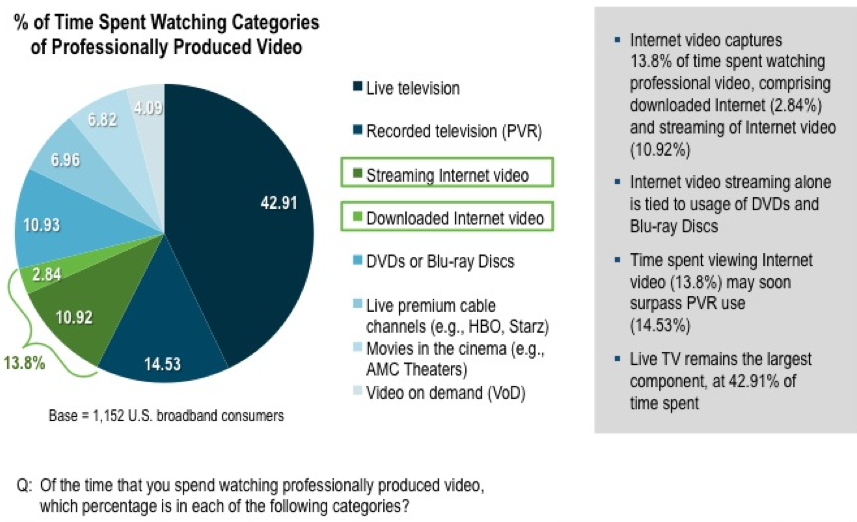































Only a short time ago, consumers had limited choices for accessing professional video content.
Today, a smorgasbord of options continues to multiply-from premium cable and DVDs, to online choices such as Apple, Netflix, and Hulu. Hardware options are equally dizzying, as traditional TV gives way to PCs, smartphones, and tablets. As portable devices meet the cloud, more consumersexpectto view their favorite content anywhere, anytime.
The London Olympics this year were a case in point. NBC statistics reveal that more than 57 million U.S. viewers streamed Olympic events online. And over 7 million unique visitors per day accessed the BBC's online Olympic sites, with nearly half of them watching on mobile devices.
Clearly, media consumption has evolved. Given the complexity of choices, it is essential for all players in the video value chain to understand what consumers need and want. To gain greater insight, the Cisco Internet Business Solutions Group (IBSG) studied the trends and behaviors of 1,152 video consumers in the United States in 2012.
Chief among our findings? Streaming is going mainstream-and if the quality, variety, and delivery of streaming video are held to a high standard, consumers will be willing to pay
for it.
Streaming Is Going Mainstream
Seventy percent of U.S. broadband users are watching professionally produced Internet video every week, with an average viewing time of more than 100 minutes per week. Among 18- to 24-year-olds, viewership rises to 94 percent. Overall, streaming video is ahead of downloading and about even with DVDs and Blu-ray Discs (see Figure 1).
Figure 1. U.S. Consumers Spend More Time Watching Internet Video than Viewing DVDs/Blu-ray Discs, VoD Content, or Live Premium Cable.

Source: Cisco IBSG, 2012
While broadcast television still rules, 48 percent of consumers have increased their streaming of professionally produced video content in the past two years, making it the fastest-growing category of video use. Internet video streaming will continue to grow in the future; in our study, this is where the greatest number of consumers expect to increase their use.
Average Internet viewing of professionally produced content-via both streaming and downloading-stands at 13.8 percent of viewing time, and may soon surpass personal video recorders (14.53 percent).
 Capitalizing on Streaming
Capitalizing on Streaming
Not surprisingly, consumers don't like to pay. Free/ad-supported sites such as TV network sites and Hulu each pull in more than 40 percent of viewers. Hulu Plus, a for-fee site, draws only 9 percent. However, our research indicated that this doesn't mean consumerswon'tpay. Understanding consumers' consumption preferences can unlock much opportunity with streaming video. Key areas on which to focus are:
Providing consumers with breadth of content, a quality experience free from technical glitches, and choice of device will allow for greater monetization of online video services in the future. Access to a safe, reliable, cloud-based "digital locker" is another key incentive. Twenty-seven percent of consumers said that they would buy more video with this feature. Nineteen percent would rent more.
Clearly, a vast audience is ready for higher-quality online video-and waiting to be tapped. But providing the right experience will be crucial if streaming is to continue its push into the mainstream.
For details, see our full reports: "It Came to Me in a Stream ... The Upward Arc of Online Video, Driven by Consumers," and "Streaming Under the Clouds: Solutions for Multiscreen Video Delivery."
Also, watch this video: http://www.youtube.com/watch?v=VnSh3PMN0GE.
 Tags chauds:
Service Provider
Vidéo
videoscape
câble
Streaming
Video On Demand
television
VOD
video streaming
Tags chauds:
Service Provider
Vidéo
videoscape
câble
Streaming
Video On Demand
television
VOD
video streaming